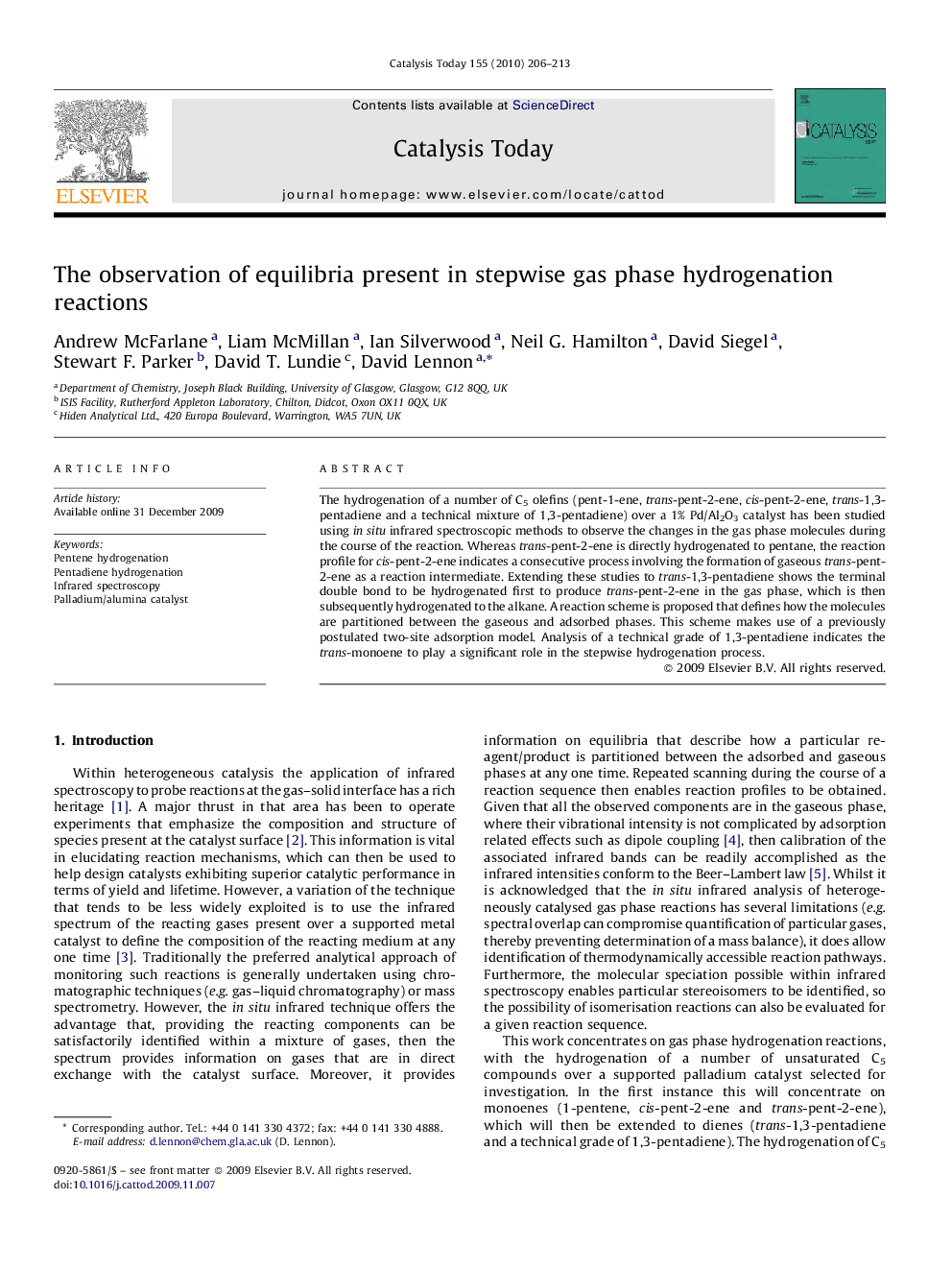| Article ID | Journal | Published Year | Pages | File Type |
|---|---|---|---|---|
| 56165 | Catalysis Today | 2010 | 8 Pages |
Abstract
The hydrogenation of a number of C5 olefins (pent-1-ene, trans-pent-2-ene, cis-pent-2-ene, trans-1,3-pentadiene and a technical mixture of 1,3-pentadiene) over a 1% Pd/Al2O3 catalyst has been studied using in situ infrared spectroscopic methods to observe the changes in the gas phase molecules during the course of the reaction. Whereas trans-pent-2-ene is directly hydrogenated to pentane, the reaction profile for cis-pent-2-ene indicates a consecutive process involving the formation of gaseous trans-pent-2-ene as a reaction intermediate. Extending these studies to trans-1,3-pentadiene shows the terminal double bond to be hydrogenated first to produce trans-pent-2-ene in the gas phase, which is then subsequently hydrogenated to the alkane. A reaction scheme is proposed that defines how the molecules are partitioned between the gaseous and adsorbed phases. This scheme makes use of a previously postulated two-site adsorption model. Analysis of a technical grade of 1,3-pentadiene indicates the trans-monoene to play a significant role in the stepwise hydrogenation process.
Related Topics
Physical Sciences and Engineering
Chemical Engineering
Catalysis
Authors
Andrew McFarlane, Liam McMillan, Ian Silverwood, Neil G. Hamilton, David Siegel, Stewart F. Parker, David T. Lundie, David Lennon,
